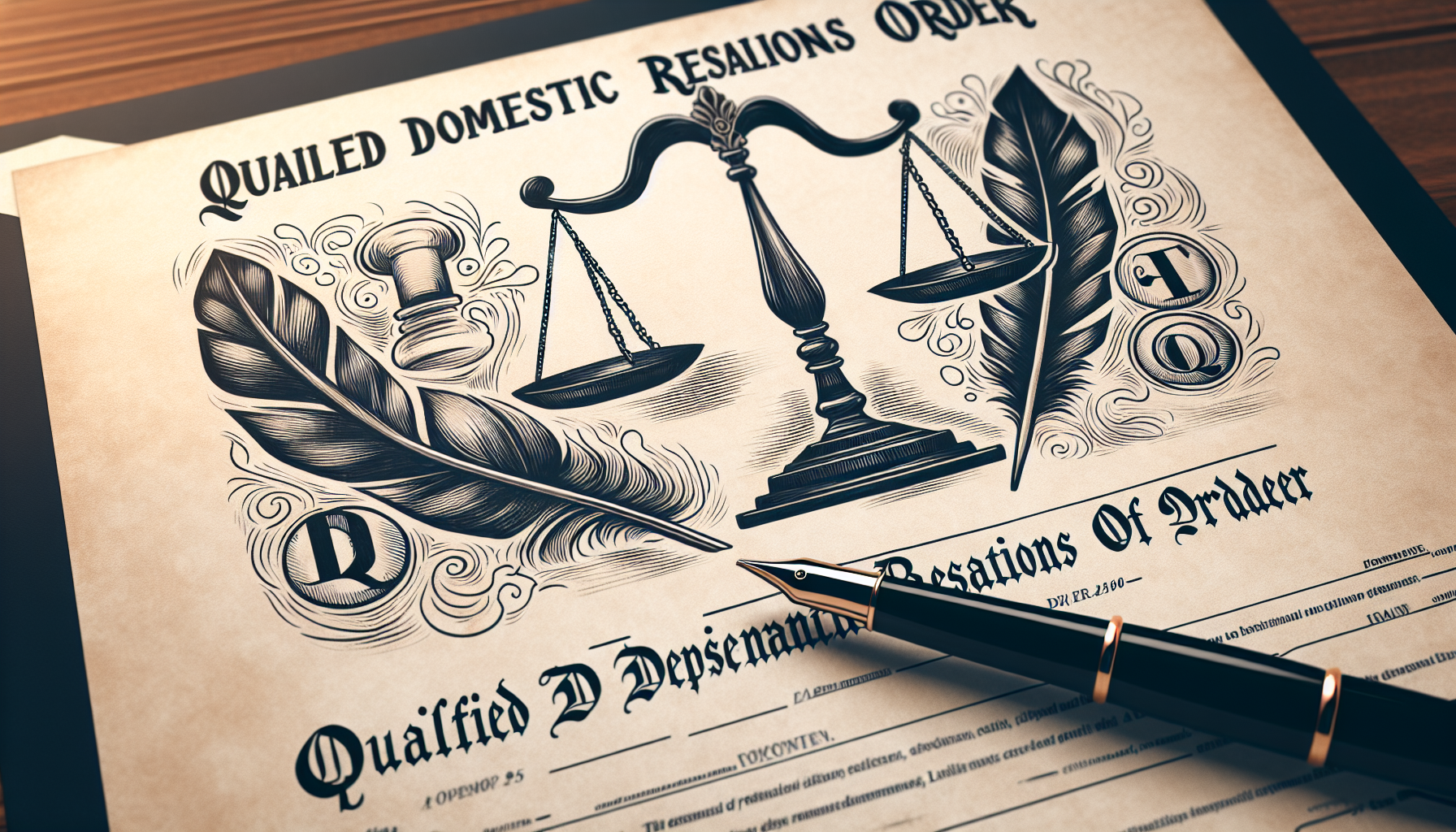
Understanding how retirement accounts are divided in a divorce can be daunting. The essential question for many facing this situation is: What becomes of my 401(k), IRA, or pension post-divorce? This article explores the intricacies of retirement account divorce, focusing on state law and the role of funding timelines, without bogging you down in legalese. Through straightforward explanations, you’ll gain insight into the factors that influence the division of these crucial assets.
Retirement funds accrued during the marriage are considered community property and are subject to division under ERISA, often employing Qualified Domestic Relations Orders (QDROs) to distribute funds equitably without penalties.
An equitable distribution of retirement assets takes individual circumstances into account and may involve strategic trade-offs with other assets; prenuptial agreements can simplify the division process.
Dividing retirement accounts has tax implications; proper handling through QDROs can avoid penalties such as the 10% early withdrawal fee, and understanding post-divorce tax responsibilities on retirement fund withdrawals is crucial.

You may think of your retirement account as your own, but in the eyes of the law, it’s a different story. Retirement accounts, including pensions, 401(k)s, 403(b) account, and individual retirement accounts (IRAs), are generally considered community assets if they are accrued during the marriage, making them subject to division in divorce proceedings. State laws play a significant role in how retirement funds accrued during marriage are divided. Many states allocate around half to each spouse, but the specifics can vary based on the legislation of the state in which the divorce is filed.
To ensure an orderly division, the legal system employs a tool called Qualified Domestic Relations Orders (QDROs). These are used to split retirement plans like 401(k)s, naming the owner as the Participant and establishing the ex-spouse as Alternate Payee. This allows funds to be allocated to the Alternate Payee without penalty for early distribution.
The principle of “what’s yours is mine” rings true when it comes to community property. Marital property includes assets acquired during marriage, such as:
retirement savings
real estate
vehicles
investments
bank accounts
These assets are often subject to division during a divorce. Contributions to retirement accounts made before the marriage, however, are considered separate property of the contributing spouse. This distinction is crucial as it can play a significant role in how assets are divided during a divorce.
The classification of retirement accounts as marital property sets the expectation that the funds accumulated during the marriage will be subject to equitable division. This means that whether you’ve been diligently contributing to your 401(k) or have a healthy IRA, the contribution and gains made during the marriage are community property and subject to division in a divorce.

When it comes to dividing retirement accounts, QDROs are the unsung heroes. A Qualified Domestic Relations Order is a legal vehicle that specifies how retirement accounts are divided in a divorce. In the context of pensions, for instance, a QDRO is used to split the share between spouses. The receiving spouse, also known as the Alternate Payee, receives her share from each payment that the participant spouse gets when he or she retires.
For 401(k) assets, a QDRO allows for a rollover of funds to the other spouse’s designated IRA without incurring the usual 10% early withdrawal penalty and taxes. However, if the receiving spouse decides to cash out the IRA, he or she will be liable for penalty and income tax.
It’s important to note that in the context of IRAs, no QDRO is necessary.

When it comes to dividing retirement assets during a divorce, the goal is equitable distribution. But what does that mean?
In community property states, retirement assets are usually divided equally.
However, in equitable distribution states, the division is based on each spouse’s circumstances, which can lead to a different outcome.
Factors such as the duration of the marriage and the contributions to the pension during that period are considered in the equitable distribution of retirement assets.
Determining the value of a pension can be complex if a spouse is not already receiving payments, which can influence how it’s divided in a divorce. Furthermore, during a divorce, 401(k)s and IRAs are seen as shared assets if contributions were made during the marriage.
Let’s delve into the difference between equal and equitable splitting. In community property states such as California, marital assets, including pensions, are generally divided evenly. The calculation is set from date of marriage to the date of separation, and each spouse receives half of that amount including all gains and losses of the investments. However, in equitable distribution states, the division is based on fairness rather than strict equality. This means that even though assets within a 401(K) that are accumulated during the marriage are considered marital property, the whole account may not necessarily be split evenly.
When navigating the division of retirement assets, couples may opt for strategic trade-offs. This involves negotiating with a spouse to maintain the integrity of retirement accounts, often trading other marital assets as part of the approach. For instance, one spouse may agree to relinquish other marital assets in exchange for retaining a larger portion of funds in their retirement accounts.
Prenuptial agreements can provide a predefined strategy for the division of retirement accounts, which can simplify negotiations during a divorce. Additionally, marital assets such as real estate can be strategically used in negotiations to avoid a direct split of retirement funds like pensions.

While dividing retirement accounts during a divorce, it’s crucial to be aware of the tax implications. If retirement benefits are not properly handled, the resulting tax liabilities may vary greatly depending on how the assets are transferred. Missteps can lead to significant financial consequences, which is why it’s essential to adhere to specific IRS rules when dividing retirement accounts to avoid unnecessary taxes and penalties.
Cashing out a share of a retirement account during divorce can lead to income taxes on the amount received. This could potentially push the individual into a higher tax bracket. Furthermore, if a person is younger than 59-1/2 and opts to cash out their portion of a retirement account, a 10% early withdrawal penalty might be incurred in addition to income taxes. Therefore, retirement assets are often placed in a category separate from the rest of the assets as their “present value” is much less than cash after considering the restrictions on withdrawal, taxes and penalties.
So, how can you avoid these penalties? One way is through the use of QDROs. These orders allow retirement plan administrators to allocate funds to the ex-spouse without penalties, ensuring a smooth transition of assets. When it comes to IRAs, a direct transfer of funds to the receiving spouse’s IRA account is required to avoid penalties.
Transferring the entirety of the account can prevent penalties and preserve the account balance. Similarly, transferring funds in a Thrift Savings Plan (TSP) to a tax-advantaged retirement account can avoid taxes if done using a proper Retirement Benefits Court Order (RBCO). Rolling over 401(k) funds into the receiving spouse’s own retirement account is tax-free. However, choosing a cash-out of transferred retirement funds subjects the amount to income tax.
After the ink has dried on the divorce decree, there are still tax obligations to consider, including the need to pay taxes on certain assets. Understanding your tax responsibilities related to any retirement accounts you’ve received as part of the settlement is crucial. Taxes are incurred on retirement accounts when the funds are withdrawn, and the rate depends on your tax bracket at the time of withdrawal.
If the retirement account division is not structured properly, you may face unexpected taxes and penalties. Alimony payments and their deductibility for tax purposes can significantly affect your post-divorce finances. The type of retirement account – whether a traditional IRA, Roth IRA, or 401(k) – can result in different tax treatments post-divorce.
Future withdrawals from traditional IRAs or 401(k)s will be taxed at ordinary income rates, while qualified distributions from Roth IRAs are generally tax-free. Understanding the tax implications for early withdrawals from retirement accounts, which may be subject to a 10% penalty if under age 59½, is crucial.
As you navigate the aftermath of a divorce, one crucial task should be at the top of your to-do list: updating beneficiary designations on retirement accounts. This is important to prevent assets from inadvertently passing to a former spouse, especially if they are still listed as an ex-spouse.
A change of beneficiary form must be completed to officially update the beneficiary information on retirement accounts. By creating customized beneficiary designations, you can ensure assets are distributed according to your specific wishes after divorce.

Divorce is a turbulent time, and amidst the chaos, it’s crucial to protect your retirement interests. One way to do this is by familiarizing yourself with the details of pension plans and understanding the unique regulations that apply to different pensions, such as military or government pensions. A prenuptial agreement can also be an effective legal mechanism to preserve the ownership of a pension, preventing it from being subject to division in a divorce.
Another crucial step is seeking expert legal and financial advice. Professionals can help you navigate the division and transfer of retirement plans, thus avoiding protracted legal proceedings and unnecessary financial consequences.
In some cases, a spouse might attempt to hide retirement assets during a divorce. If this happens, it’s crucial to obtain legal assistance to navigate the issue and ensure a fair distribution of assets. In certain jurisdictions such as California, any asset not disclosed and divided during a divorce is called an “omitted asset” and can be divided later on, with severe penalties to the withholding spouse. In California, spouses also owe each other a duty to provide full and complete financial disclosure and there are consequences for failure to include retirement accounts.
Lawyers can help scrutinize financial documentation such as tax returns and bank statements to discover signs of hidden assets. Forensic accountants and digital forensics experts are also skilled in analyzing complex financial records to detect and evaluate concealed assets.
Navigating the division of retirement assets is a complex process, making professional financial guidance essential. Experts can help you understand the nuances of complex retirement assets such as:
401(k) plans
IRAs
Pension plans
Stock options
Experienced attorneys also play a critical role in establishing the value of retirement benefits and minimizing potential tax liabilities during a divorce.
Speaking with a financial advisor or an attorney knowledgeable about tax consequences is advised to avoid surprises when dividing retirement funds in a divorce.
In navigating the challenging process of divorce, understanding how to divide retirement accounts fairly and efficiently is crucial. From defining marital vs. separate property to the role of QDROs, the importance of equitable distribution strategies to tax implications, and the significance of updating beneficiary information post-divorce, being well-informed will help you protect your retirement interests. Remember, seeking professional advice can provide invaluable support to navigate this complex process.
Yes, any funds contributed to the 401(k) during the marriage are considered community property and can be subject to division during a divorce, unless there’s a prenuptial agreement in place.
In most cases, the money contributed to a retirement account during a marriage is considered community property in a divorce. Funds in a 401(k) or similar savings program before marriage are usually treated as separate property and not included in asset division.
Community property in a divorce typically includes assets acquired during the marriage, such as retirement savings, and is subject to division.
A Qualified Domestic Relations Order (QDRO) is a legal vehicle that outlines the division of retirement accounts in a divorce, enabling the orderly distribution of assets without incurring penalties for early withdrawal. Retirement plan administrators will comply with QDROs and make the divisions specified in a QDRO. IRAs do not require the use of QDROs.
Splitting retirement accounts in a divorce can result in significant tax liabilities, such as income taxes on cashed-out amounts. It’s important to handle this process carefully to avoid unnecessary tax burdens.
Comments
No Responses to “Navigating Retirement Account Divorce: A Comprehensive Guide to Division and Distribution”
No comments yet.